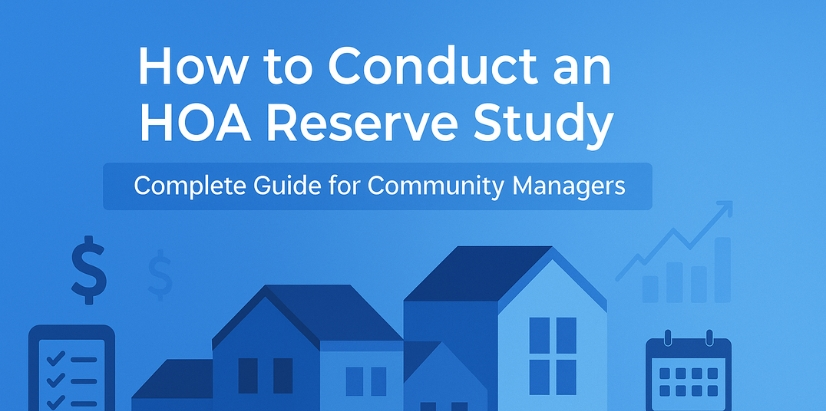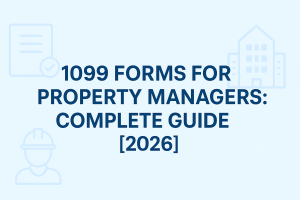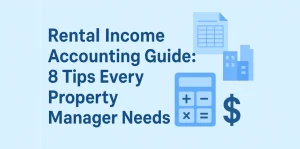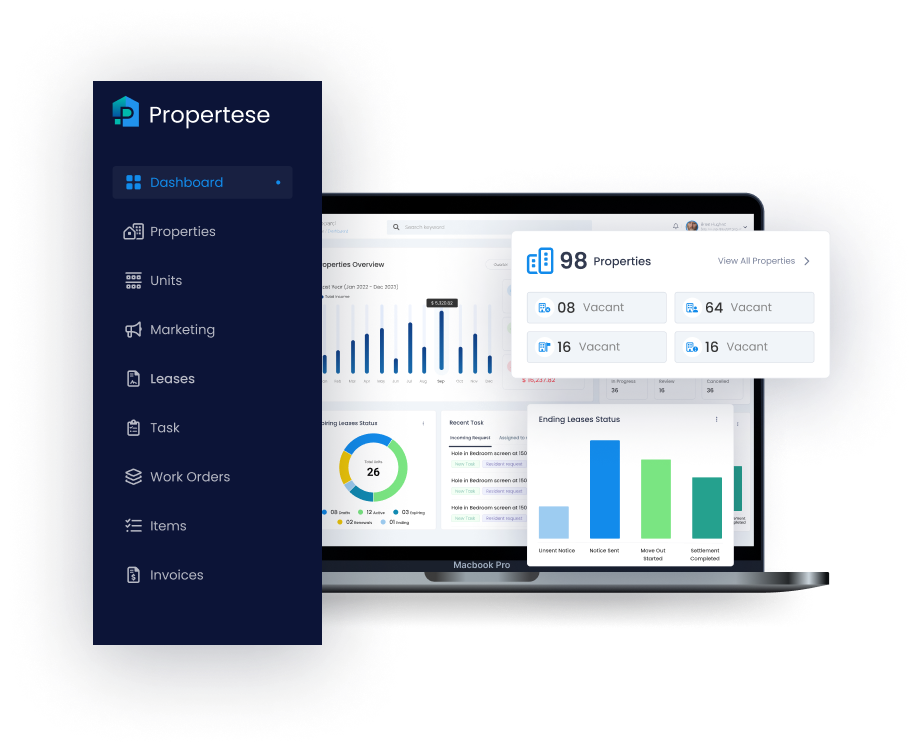
As a community manager, you’ve likely encountered the challenge of planning for major repairs and replacements without burdening homeowners with surprise special assessments. This is where an HOA reserve study becomes your most valuable financial planning tool. Recent industry data reveals that as many as 70% of associations’ HOA reserves are underfunded, leading to costly emergency assessments and declining property values.
In this comprehensive guide, we’ll walk you through everything you need to know about conducting a practical reserve study, from legal requirements to implementation strategies that protect your community’s financial health.
What Is an HOA Reserve Study?
An HOA reserve study is a comprehensive financial planning document that analyzes your community’s common area components, estimates their remaining useful life, and projects the funding needed for future repairs and replacements. Think of it as a crystal ball for your community’s infrastructure needs, helping you anticipate expenses before they become financial emergencies.
The study serves three critical functions:
- Component inventory and condition assessment of all major common elements
- Financial projections for replacement costs and timing
- Funding recommendations to avoid special assessments
According to the Community Associations Institute (CAI), a proper reserve study should follow their National Reserve Study Standards, which define specific procedures for component identification, financial analysis, and funding plan development.
Legal Requirements by State: What You Need to Know
Mandatory Reserve Study States
Following the devastating Surfside condominium collapse in 2021, many states have strengthened their reserve study requirements. The tragedy highlighted what happens when communities defer critical maintenance, and lawmakers took notice.
Florida now has some of the toughest rules in the country. Under House Bill 913 (2025), associations managing buildings three stories or higher must conduct a Structural Integrity Reserve Study (SIRS) every 10 years, with the initial SIRS deadline extended to December 31, 2025. What’s really changed is that starting January 1, 2025, condo owners can no longer vote to skip funding these critical reserves. The law clarifies that SIRS applies to buildings with “three habitable stories or more, “so parking garages don’t count toward that threshold.
New Jersey jumped on board in 2024 with Senate Bill S2760 and Assembly Bill A4384, requiring reserve studies for all condominium associations, cooperatives, and planned developments with at least $25,000 in common area assets.
California has been ahead of the curve for years, requiring associations to conduct reserve studies every three years with annual reviews and visual inspections of major components under Civil Code Section 5550.
Colorado tried to join this group in 2022 with HB22-1387, but Governor Polis vetoed the bill despite it passing both chambers. For now, Colorado HOAs aren’t legally required to do reserve studies.
Current State Requirements
Based on recent industry sources, the following states currently have reserve study mandates:
- Nevada: Reserve studies are conducted every five years by a qualified professional
- Virginia: Reserve studies must take place at least once every five years under Section 55-79.83.1
- Washington: Strongly encourages associations to conduct reserve studies every three years
- Hawaii: Reserve studies are conducted every five years by a qualified professional
- Maryland: Reserve studies every five years for condominiums and cooperatives
- Delaware: Reserve studies are conducted every five years by a qualified professional
- Tennessee: Reserve studies are conducted at least every five years by a qualified professional
- Utah: Reserve studies are conducted at least every six years by a qualified professional
- Oregon: Reserve studies are conducted every three years by a qualified professional
Federal Lending Implications
Federal lending standards create significant consequences for communities without adequate reserves. FHA requirements state that condo associations must maintain at least 10% of their budget in cash reserves, with exceptions granted only when a professional reserve study demonstrates that less funding is adequate for long-term requirements.
Key FHA criteria include:
- At least 85% of units must be current on dues
- Reserve funds must meet the 10% threshold or be supported by a current reserve study
- Properties must be recertified every three years
Understanding Reserve Study Components
The Four Pillars of Reserve Analysis
Every comprehensive HOA reserve study should include these essential elements:
1. Component Inventory: This involves cataloging all common area elements that meet the three-part test established by CAI:
- The association has the obligation to maintain or replace the element
- The need can be reasonably anticipated
- The cost is material to the association
2. Condition Assessment: Professional evaluation of each component’s current state, considering factors like:
- Age and usage patterns
- Maintenance history
- Climate impact and environmental exposure
- Visual inspection findings
3. Life and Valuation Estimates: Determining remaining useful life and replacement costs for each component. According to industry standards, typical useful life ranges include:
- HVAC systems: 10-15 years for air conditioning, 15-20 years for furnaces
- Roofing: 15-30 years for asphalt shingles, 40-80 years for metal roofing
- Building envelope components: 20-40 years for windows and doors
4. Funding Plan Development Creating a strategic approach to accumulate adequate reserves over time.
Component Categories by Property Type
Condominium Properties typically include:
- Building envelope (exterior walls, windows, doors)
- Roofing systems and waterproofing
- Elevators and mechanical systems
- Fire protection and safety systems
Townhome Communities focus on:
- Individual or shared roofing systems
- Exterior finishes and siding
- Common landscaping and hardscaping
- Recreational amenities
Single-Family HOAs emphasize:
- Roads and sidewalks
- Storm water management
- Community amenities (pools, clubhouses)
- Entry features and signage
Reserve Study Funding Methods: Choosing the Right Approach
Three Primary Funding Strategies
Baseline Funding establishes the minimum level that prevents reserve balances from falling below zero. While this approach minimizes immediate financial burden, it carries the highest risk of special assessments and isn’t recommended as a long-term strategy.
Threshold Funding maintains reserves above a specified percentage—typically 70% of the fully funded balance. This moderate-risk approach provides better protection against unexpected expenses while keeping contributions manageable.
Full Funding targets 100% of the fully funded balance, offering maximum protection against special assessments. Communities using this approach historically experience 35% lower subsequent special assessments when updating their reserve studies more frequently than once every five years.
The Percent Funded Calculation
The industry standard for measuring reserve health is the Percent Funded calculation:
(Reserve Account Balance ÷ Fully Funded Balance) × 100 = Percent Funded
According to CAI guidelines:
- 70-100% funded: Low risk of special assessments
- 31-70% funded: Moderate risk level
- 0-30% funded: High risk of financial difficulties
How Propertese Simplifies HOA Reserve Study Management
Modern property management platforms have revolutionized the reserve study process, making it more accurate and efficient than ever before. Propertese combines cutting-edge technology with comprehensive community association management features to transform how community managers handle reserve studies.
Digital Data Collection and Analysis
Advanced property management software like Propertese enables community managers to:
- Maintain comprehensive component databases with automated tracking of installation dates, warranty information, and maintenance history through integrated asset management
- Generate detailed financial projections using integrated accounting data and budget planning tools that connect with platforms like Xero
- Store and organize inspection photos with GPS tagging and condition scoring through document management capabilities
- Create professional reports with customizable templates and automated calculations using advanced reporting features
Mobile Inspection and Real-Time Updates
Modern reserve study providers increasingly utilize mobile technology for on-site assessments. Propertese’s mobile capabilities allow for:
- Real-time data entry during site visits with maintenance and work order management integration
- Integrated photography with automatic asset tagging
- Offline capability for areas with limited connectivity
- Immediate synchronization with main databases
Predictive Analytics and AI Integration
Emerging technologies are beginning to impact reserve study accuracy through Propertese’s advanced features:
- Predictive maintenance algorithms that adjust useful life estimates based on usage patterns tracked through the platform
- Climate modeling that accounts for regional weather impacts on component longevity
- Cost escalation forecasting using real-time market data and vendor pricing history
Integrated Financial Management
Automated Reserve Fund Accounting: Propertese provides separate tracking for different component categories, eliminating manual errors that plague traditional spreadsheet management. The platform automatically calculates monthly contributions, tracks spending against budgeted amounts, and provides real-time balance updates.
Budget Variance Analysis: The system continuously monitors actual expenses versus projected costs from your reserve study, identifying trends that may require adjustments to future funding plans. This analysis integrates seamlessly with your portfolio management oversight.
30-Year Cash Flow Integration: Model different funding scenarios and see how various contribution levels affect your community’s long-term financial health, with projections that support best practices for managing HOA reserve funds.
Component Asset Management Excellence
Digital Asset Database: Store detailed information about every reserve component, including installation dates, warranty information, maintenance history, and photos. This centralized approach ensures accurate data for reserve study updates.
Automated Maintenance Scheduling: Extend component useful life through preventive maintenance tracked via the platform’s comprehensive maintenance management system, directly impacting reserve funding requirements.
Vendor Management Tools: Maintain detailed records of contractor performance and pricing history, invaluable when reserve study providers need current cost estimates for component replacements.
Advanced Reporting and Communication
Board-Ready Reports: Generate professional reserve fund status reports through customizable reporting tools that translate complex financial data into homeowner-friendly formats, automatically calculating percent funded ratios and highlighting upcoming expenditures.
Owner Portal Integration: Through the owner portal, homeowners can access reserve study summaries, understand how their dues are invested in community assets, and view upcoming projects, building transparency and reducing resistance to necessary dues increases.
Automated Compliance Tracking: For communities in states with mandatory reserve study requirements, Propertese tracks update deadlines and sends automated reminders to ensure compliance with state-specific regulations.
Specialized HOA Features
As a platform designed specifically for HOA management, Propertese includes features particularly relevant to reserve studies:
Common Area Maintenance Tracking: The common area maintenance module helps track expenses that affect reserve component longevity, providing data that can justify extending useful life estimates in future studies.
Community Communication: Keep residents informed about reserve-funded projects through automated notifications and email communication tools. When homeowners understand how reserves are being used, they’re more likely to support adequate funding levels.
Multi-Property Management: For companies overseeing multiple HOAs, Propertese enables comparison of reserve funding levels across communities, identifying best practices and ensuring consistent compliance across entire portfolios.
Future Trends and Emerging Considerations
Climate Change Impact on Reserve Planning
Climate change is fundamentally altering traditional valid life assumptions. The buildings and construction sector accounts for 37% of global greenhouse gas emissions, while extreme weather events are becoming more frequent and severe.
Reserve studies must now consider:
- Increased storm intensity requiring more robust building materials
- Rising temperatures that accelerate component deterioration
- Changing precipitation patterns affecting drainage and waterproofing systems
Sustainable Building Materials
The trend toward sustainability is influencing component selection and reserve planning:
- Cross-laminated timber (CLT) offers carbon storage benefits with an extended useful life
- Smart glass technology provides energy efficiency advantages
- Climate-resilient materials like steel and aluminum offer better extreme weather resistance
Regulatory Evolution
Following the Surfside tragedy, expect continued expansion of reserve study requirements across additional states. Current trends include:
- Mandatory structural inspections integrated with reserve planning
- Enhanced disclosure requirements for buyers and lenders
- Increased board liability for inadequate reserve management
Conclusion: Protecting Your Community’s Financial Future
Conducting a proper HOA reserve study isn’t just about regulatory compliance, it’s about protecting your community’s financial stability and property values. Communities that maintain well-funded reserves supported by professional studies avoid the disruption and financial hardship of large special assessments while preserving their appeal to potential buyers and lenders.
The key to success lies in understanding your state’s requirements, choosing qualified professionals, implementing appropriate funding strategies, and maintaining regular updates to reflect changing conditions and costs. With proper planning and the right tools, your community can build a strong financial foundation that serves homeowners well for decades to come.
Remember, if a condo or HOA updates its reserve study more often than once in 5 years, its average subsequent special assessments are 35% lower. This statistic alone demonstrates the clear return on investment that professional reserve planning provides.
With the right technology and industry best practices, reserve studies become powerful tools for long-term community success rather than mere compliance requirements.
Contact our team to learn how Propertese can enhance your HOA reserve study management.
Table of Contents
Stay Updated
Subscribe to get the latest news, industry trends, blog posts, and updates...




